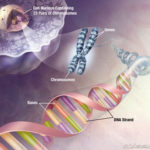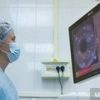Basak, Samar K. MD, FRCS; Basak, Soham MS, DNB
Cornea: September 10, 2019 — Volume Publish Ahead of Print — Issue — p
Abstract:
Purpose: To evaluate the clinical outcomes and endothelial cell density (ECD) after Descemet membrane endothelial keratoplasty using peripherally trephinated donor tissue (DMEK-pD) and compare with DMEK using centrally trephinated donor tissue (DMEK-cD) in patients with Fuchs endothelial corneal dystrophy (FECD).
Methods: This was a prospective comparative interventional case series. One hundred twenty-five eyes of 110 patients with FECD and cataract who underwent either DMEK-pD (n = 60) or DMEK-cD (n = 65) combined with phacoemulsification, between June 2016 and November 2018, were included. Preoperative and postoperative best spectacle-corrected visual acuity (BSCVA) and ECD were recorded at 6 months and 1 year.
Results: All eyes had visually symptomatic FECD and cataract with a preoperative mean BSCVA of 1.03 logarithm of the minimum angle of resolution in both groups. Baseline donor mean ECD was 2944 ± 201 and 2907 ± 173 cells/mm2 in the DMEK-pD and DMEK-cD groups, respectively (P = 0.12). BSCVA improvement was comparable at 6 months and 1 year (P = 0.23 and P = 0.34). Mean ECD recorded after 6 months and 1 year was significantly higher in the DMEK-pD group than in the DMEK-cD group: 2508 ± 201 versus 2084 ± 298 cells/mm2 (P < 0.01) and 2338 ± 256 versus 1907 ± 339 cells/mm2 (P < 0.01), respectively. Complication rates were similar in both groups.
Conclusions: DMEK-pD exhibited similar clinical outcomes with higher ECD compared with conventional DMEK-cD after 6 months and 1 year. The possibility of transplanting peripherally trephinated donor tissue in DMEK with more endothelial cells needs to be explored further in the future.
Copyright © 2019 Wolters Kluwer Health, Inc. All rights reserved.












